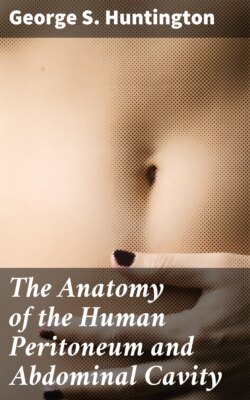Читать книгу The Anatomy of the Human Peritoneum and Abdominal Cavity - George S. Huntington - Страница 6
ОглавлениеFig. 42.—Genito-urinary tract and cloaca of Iguana tuberculata, ♀. (Columbia University Museum, No. 1846.)
(b) The allantois. This is a hollow outgrowth from the embryonic intestinal canal of the higher vertebrates, performing important functions in connection with the early nutrition of the embryo. In the course of subsequent development its proximal portion, situated within the abdominal cavity, becomes converted into the urinary bladder. In mammals it loses its original connection with the intestinal canal and is assigned entirely to the genito-urinary tract. In some of the lower vertebrates, amphibia and reptiles it retains its connection with the ventral wall of the cloaca throughout life. (See Fig. 42, genito-urinary tract of Iguana tuberculata.)
After the intestinal canal has become separated from the yolk-sac it forms at first a straight tube, running cephalo-caudad beneath the chorda dorsalis. In most forms, however, the intestine grows much more rapidly in length than the body-cavity of the embryo in which it is contained. Hence the intestine is forced to form coils or convolutions.
The entire alimentary canal, from the mouth to the anus, can be separated into the following divisions and subdivisions:
I. Foregut, including
1. The oral cavity.
2. The pharynx.
3. The œsophagus.
4. The stomach.
II. Midgut, closely associated at its beginning with the liver and pancreas.
It extends between the pyloric extremity of the stomach and the beginning of the last segment, the endgut, frequently separated from both by ring-like aggregations of the circular muscular fibers and corresponding projections of the mucous membrane (pyloric and ileo-colic valves).
The midgut is usually the longest portion of the intestinal tube.
III. Endgut, the last segment of the intestinal canal, courses through the pelvic portion of the body cavity. From this short end-piece are developed: (1) The colon, sigmoid flexure and rectum; (2) the cloaca with the uro-genital sinus and the duct of the allantois.
